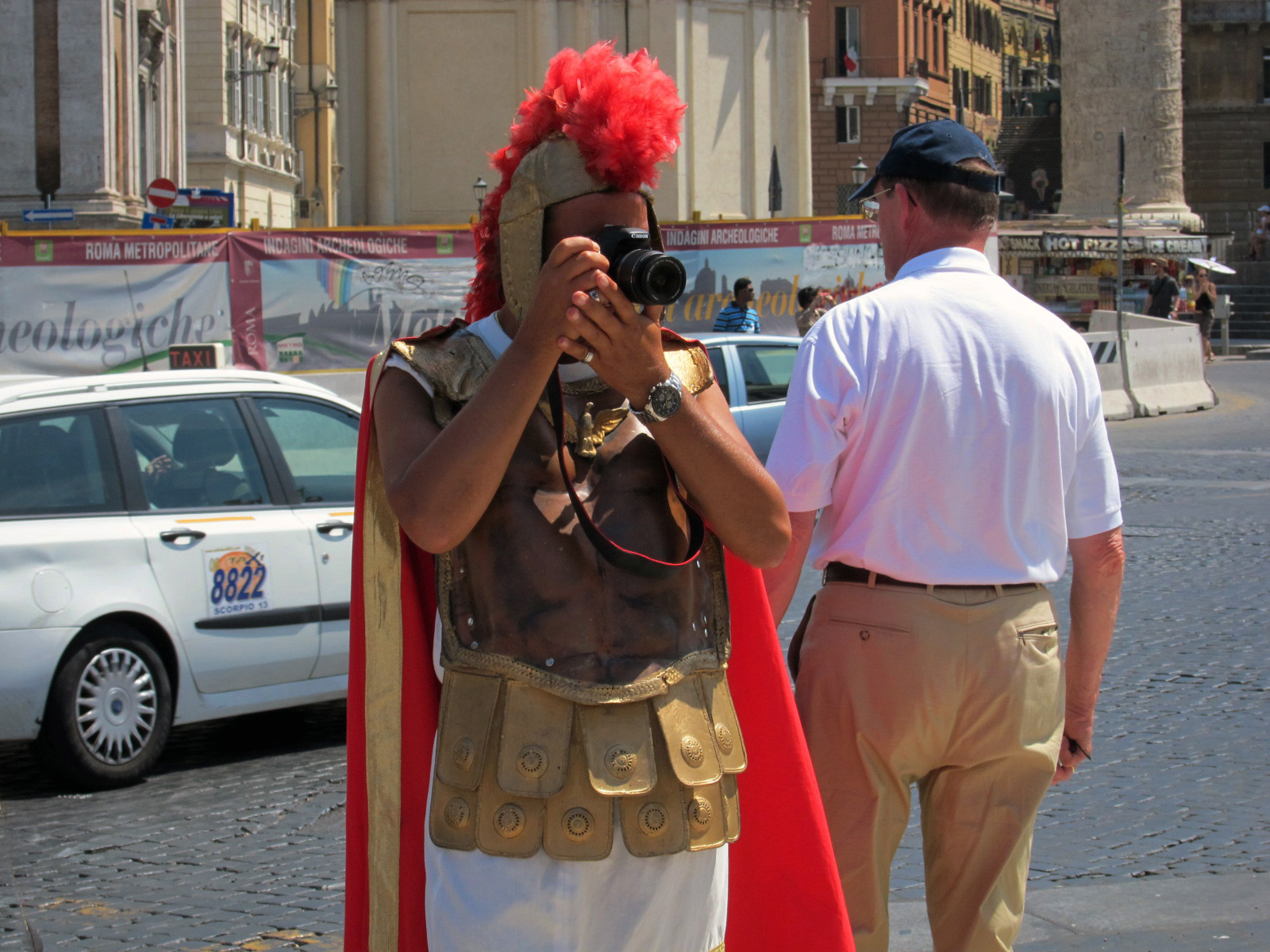 “Hail Caesar. We who are about to fry salute you”.
“Hail Caesar. We who are about to fry salute you”.
The temperatures in Rome are +33°C (91°F) every day. somedays we’ve gotten up close to 40°C. We like to get out of san Francisco in the summer. It’s cold and windy back home and a couple of months in the the Italian heat always seems like a good idea. Oh well, there is always the shady side of the street and air conditioning.
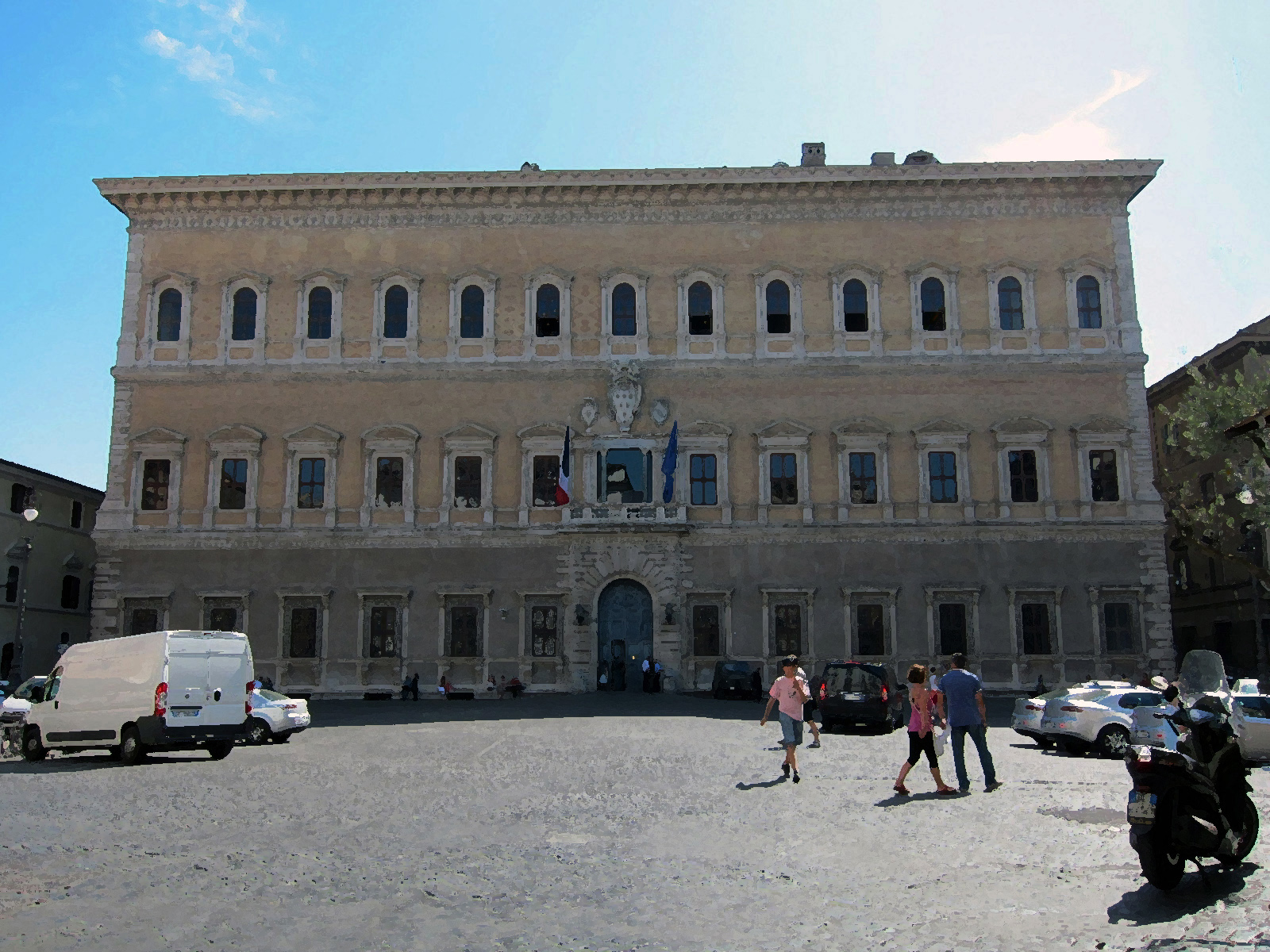 A visit to the Palazzo Farnese
A visit to the Palazzo Farnese
If you write to the French embassy in Rome 3-4 months in advance of your visit you can get into a guided tour of the Palazzo Farnese, one of the grandest of the 16th century Palazzi in the city.
The Palazzo has served as the French Embassy in Rome since 1874. The Bourbon Kings of Naples inherited it from the Farnese family and then sold it to the French, who still pay a symbolic rent of 1 euro per year. Hey the rent has gone up. It used to be 1 lira a year.
We wrote to the Ambassade de France en Italie / Service culture about 4 months prior to our visit and got a reply right away.
They offer the tours in Italian or French. We chose Italian. Our 3pm tour included two well informed Italians, two French who got into the wrong tour (the French Tour was at 4pm but they didn’t want to wait), and five Swiss, who understood enough Italian to translate it audibly into German. Nonetheless, even with this Tower of Babel going on, the tour was great. This is a remarkable piece of architecture.
In 1517, the Palazzo Farnese began under the design and construction of Antonio de Sangallo the younger, Bramante’s assistant in building St Peter’s cathedral. The construction passed through the hands of Michelangelo and Giaconda Della Porte. It encompasses Renaissance, Classical and the early beginnings of the Baroque movement. The longer it takes to build it, the more architectural style you can use.
The façade shows one of Michelangelo’s favorite designs of alternating curved and triangular pediments over the windows. In the courtyards he alternated triangular window pediments on one story and curved ones on the next.
The interior includes the first straight staircase of its kind in Italy; actually it’s the first grand staircase in any Palazzo. Sangallo thought this would be fun and different. It started a whole redesign of grand entrances.
The room with the Annibale Carracci frescos were studied by every great Baroque painter in Europe. Many consider these Carracci frescos to be the birth of the Baroque period. Because the frescos were painted in 1595, after the Church reformation, nudity was considered rude and consequently the gods have discretely placed fabric or handkerchiefs over delicate places.
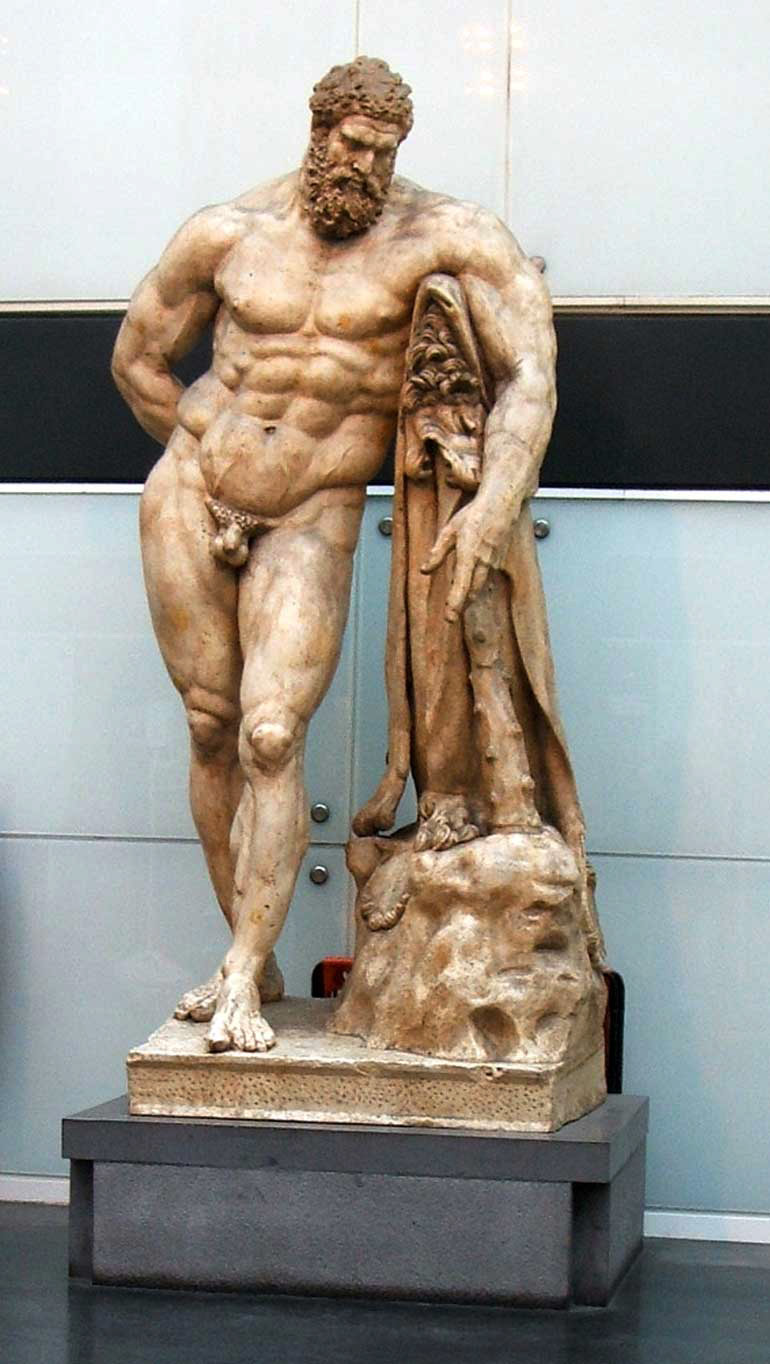 One of our favorite rooms is the Sala d’Ercole with the large statue of the “Farnese” Hercules, a 3rd century AD Roman copy of a 4th century BC Greek statue made for the Baths of Caracalla. The torso, arms and legs were discovered in 1546 near the baths of Caracalla but the head was found in a well in Trastevere, proof that when you separate a body and a head, they will go to two separate locations. In this case, the entire statue went somewhere else in the 1787 when the Farnese Collection of Art was sent to the Naples National Archaeological Museum. It became such a popular piece that countless copies were made in between the 16th and 18th century. It was used as an example of the human musculature and admired as one of the greatest pieces of Greek/Roman art in antiquity. It’s been copied in Seville, Spain, at the Pitti Palace in Florence, at the Louvre in Paris, in Wilhelmshoe, Germany and here at the Farnese Palace in Rome, where since they couldn’t get the real one back from Naples, they recreated it. Now it’s back where it used to be, well kind of back. When it was here prior to 1787 it stood in the courtyard. Now it’s in the Sala d’Ercole
One of our favorite rooms is the Sala d’Ercole with the large statue of the “Farnese” Hercules, a 3rd century AD Roman copy of a 4th century BC Greek statue made for the Baths of Caracalla. The torso, arms and legs were discovered in 1546 near the baths of Caracalla but the head was found in a well in Trastevere, proof that when you separate a body and a head, they will go to two separate locations. In this case, the entire statue went somewhere else in the 1787 when the Farnese Collection of Art was sent to the Naples National Archaeological Museum. It became such a popular piece that countless copies were made in between the 16th and 18th century. It was used as an example of the human musculature and admired as one of the greatest pieces of Greek/Roman art in antiquity. It’s been copied in Seville, Spain, at the Pitti Palace in Florence, at the Louvre in Paris, in Wilhelmshoe, Germany and here at the Farnese Palace in Rome, where since they couldn’t get the real one back from Naples, they recreated it. Now it’s back where it used to be, well kind of back. When it was here prior to 1787 it stood in the courtyard. Now it’s in the Sala d’Ercole
Hercules is suspended in a pose of either relaxation after completing the last of his Herculean labors or, according to our guide, he is completely exhausted and is posed at the moment before his death. He is leaning on his club, draped with the pelt of the Nemea Lion. Behind him, he holds an apple of the Hesperides, the prize of his 12th and last labor. Our guide thinks he is holding it behind his back as an offering to the gods and he passes from mortal man to his place on Mt Olympus.Whatever the meaning it, it is an amazing sculpture and really shows the craftsmanship of 2000 years ago. The image I put in the post is the original from the Naples National Archaeological Museum.
The Cinecittà studios began in 1936 on the outskirts of the city when the smaller film studio in the center of Rome proved too small to make the political films needed to inspire the ego of Mussolini. The smaller studio, by coincidence also burned down to make way for the new.
Cinecitta was completed in 13 months. There are 64 buildings here and it is still a very active film studio. The Cinecittà Studios are currently opened to the public for studio tours. Lucky us.
Two buildings have been transformed into memorabilia from early Fellini films as well as the Liz Taylor Richard Burton “Cleopatra”, Visconti’s “Death in Venice” and some more contemporary films that passed through Cinecitta like “In the Name of the Rose”, “Gangs of New York” and HBO’s “Rome”. There were rooms of costumes and props, and a small theatre were a short, very entertaining film explained the art of film editing, sound enhancement, Foley and special effects.There is also a preview theatre where we saw the screen tests of Sofia Loren, Claudia Cardinale, Stefania Sandrelli and a lot of young (hoping to be) screen stars.
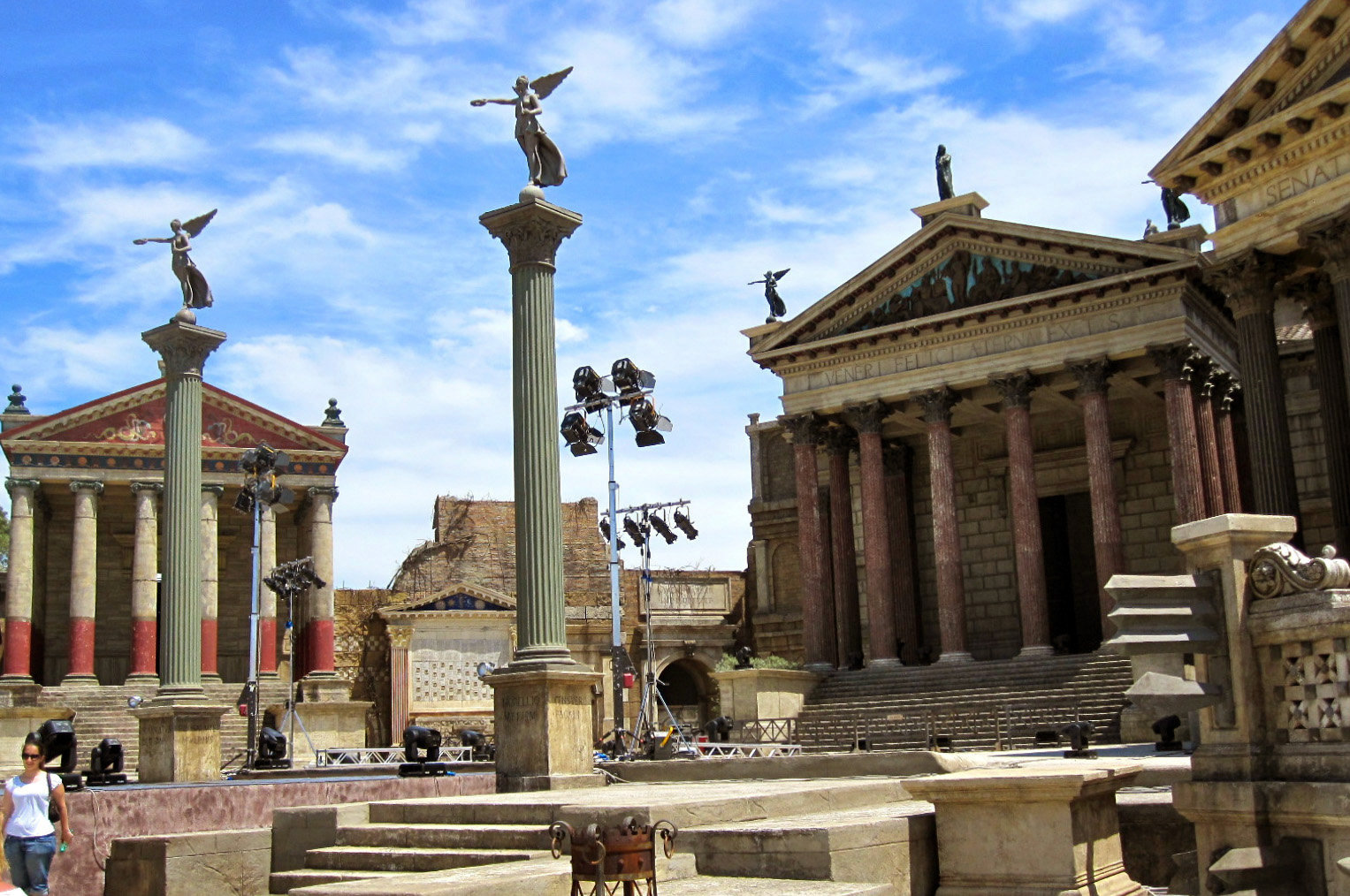 After the museum exhibits we were guided to the large sets. We walked down the remains of Martin Scorsese’s Broadway from Gangs of New York. The other half of the set was currently in use for a film production so we couldn’t get into to (or take photos). Then we were led to the sets for the BBC/HBO production of “Rome”, one of our favorite HBO series. The set is enormous and the most expensive ever made. It took 9 months to complete the sets but the cost of the production was so expensive the show ran out of money after two years. Too bad. I think they had planned on a 5 year run. There was talk of a feature length film but when some of the Rome sets burned down in a bad studio fire last year, all plans were stopped.
After the museum exhibits we were guided to the large sets. We walked down the remains of Martin Scorsese’s Broadway from Gangs of New York. The other half of the set was currently in use for a film production so we couldn’t get into to (or take photos). Then we were led to the sets for the BBC/HBO production of “Rome”, one of our favorite HBO series. The set is enormous and the most expensive ever made. It took 9 months to complete the sets but the cost of the production was so expensive the show ran out of money after two years. Too bad. I think they had planned on a 5 year run. There was talk of a feature length film but when some of the Rome sets burned down in a bad studio fire last year, all plans were stopped.
As we walked back towards the front gate, we passed the famous Studio 5. This was Fellini’s sound stage. He worked here for close to 30 years. At one point, he was spending so my time here, he got the stage crew to build him an apartment inside the studio so he’s never have to leave. For his autobiographical film Amarcord, he recreated the town of Rimini of his youth, complete with ocean, beach and village inside of Studio 5. When Fellini died in 1993, the funeral was held in Studio 5.
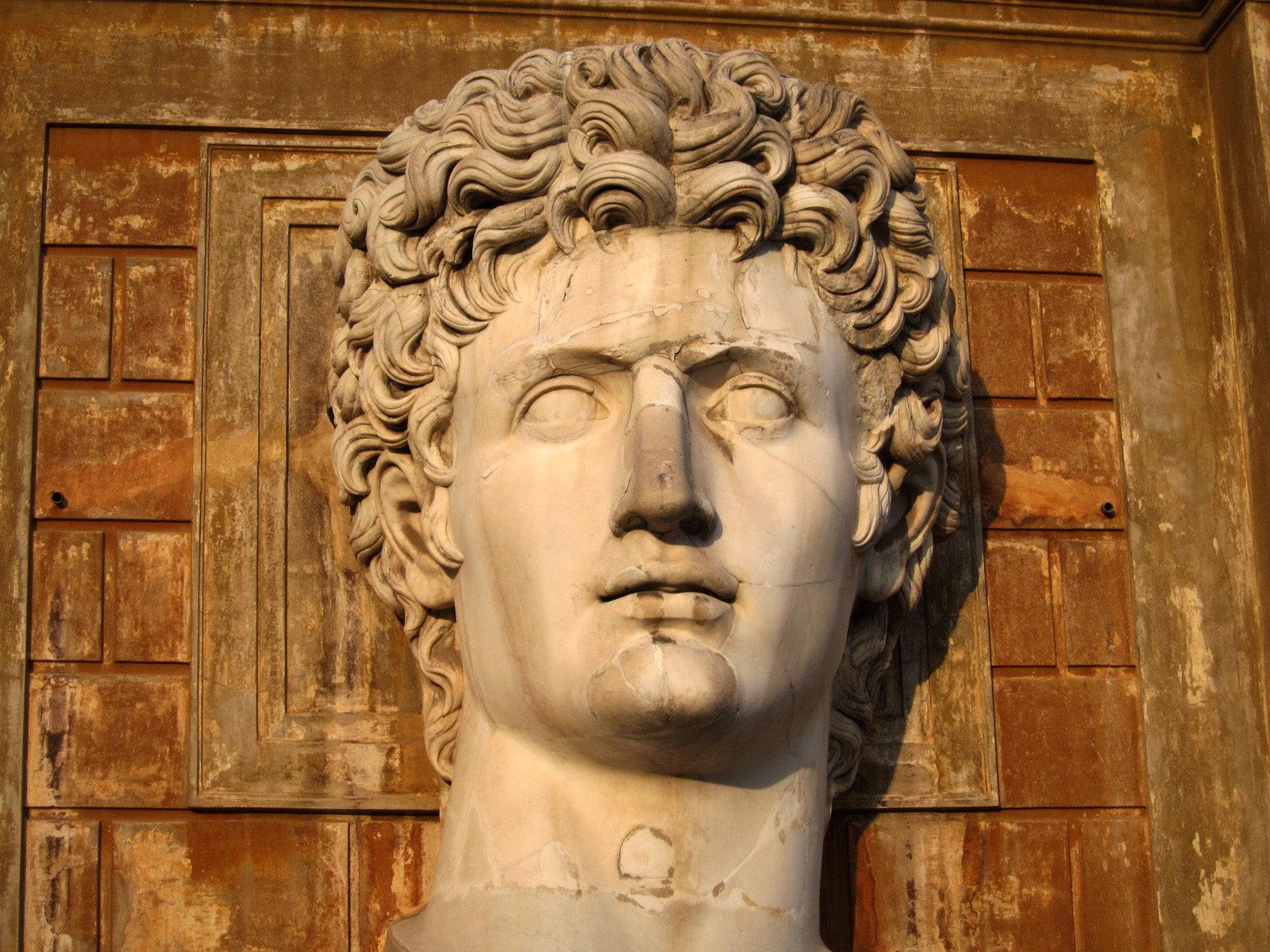 The Night Visit to the Vatican
The Night Visit to the Vatican
A Night Vatican Tour is a great idea and also requires some pre-planning to get in. Vatican under the Stars tours was scheduled for May-July 2011. The cost is 15€ plus a 4€ handling fee per ticket. The tours start at 7pm. Every 15minutes more people are allowed in till 9pm. I don’t know how many people are in each tour group. It seemed like maybe 50-75, but in 2 hrs that quickly turns into 400-600. The museum is enormous and can easily handle 400-600 but for the night tours they close off a lot of the rooms and shuffle the crowd into the “greatest hits”, The Cortille della Pigna (Pinecone courtyard), the Belvedere Apollo, the Laocöon, the Venus Felice, the Egyptian rooms, the Map Room, the Tapestry Room, the Borgia Apartments, the Contemporary Art collection, the Raphael rooms and the Sistine chapel, which gets very dark as the sun goes down. The night tour ends at 11:30 although the Sistine chapel closes at 10:30. When we finally arrived to the Sistine Chapel around 9:30 it was pretty dark. I don’t think they turn on any lights at night. There was a lot of mumbling about not being able to see anything and then everyone left. The Night Tour ends with the Sistine Chapel but if you want to really see it, go to the Sistine first and then come back for the rest. That’s what we plan on doing the next time.
We got in at 7pm, the first group. The sun was setting, and we got enchanted with the magical light in the courtyard. The orange glow of the setting sun against the statuary of Cortille della Pigna was wonderful and we could have just relaxed there for an hour, at least, but we wanted to try to get through the museum before the later tours filled up tha halls.
By the time we got to the Egyptian rooms we were already knee deep in noisy children. I have no idea why people bring small children to museums. The kids don’t want to be there and consequently they take it out on all the adults. In the Egyptian wing, two young girls were shrieking and running though through one of the exhibits. They were american children with their grandmother. I couldn’t tell who was worse, the out of control kids or the irresponsible grandmother. I love to see Americans in Rome but sometimes not.
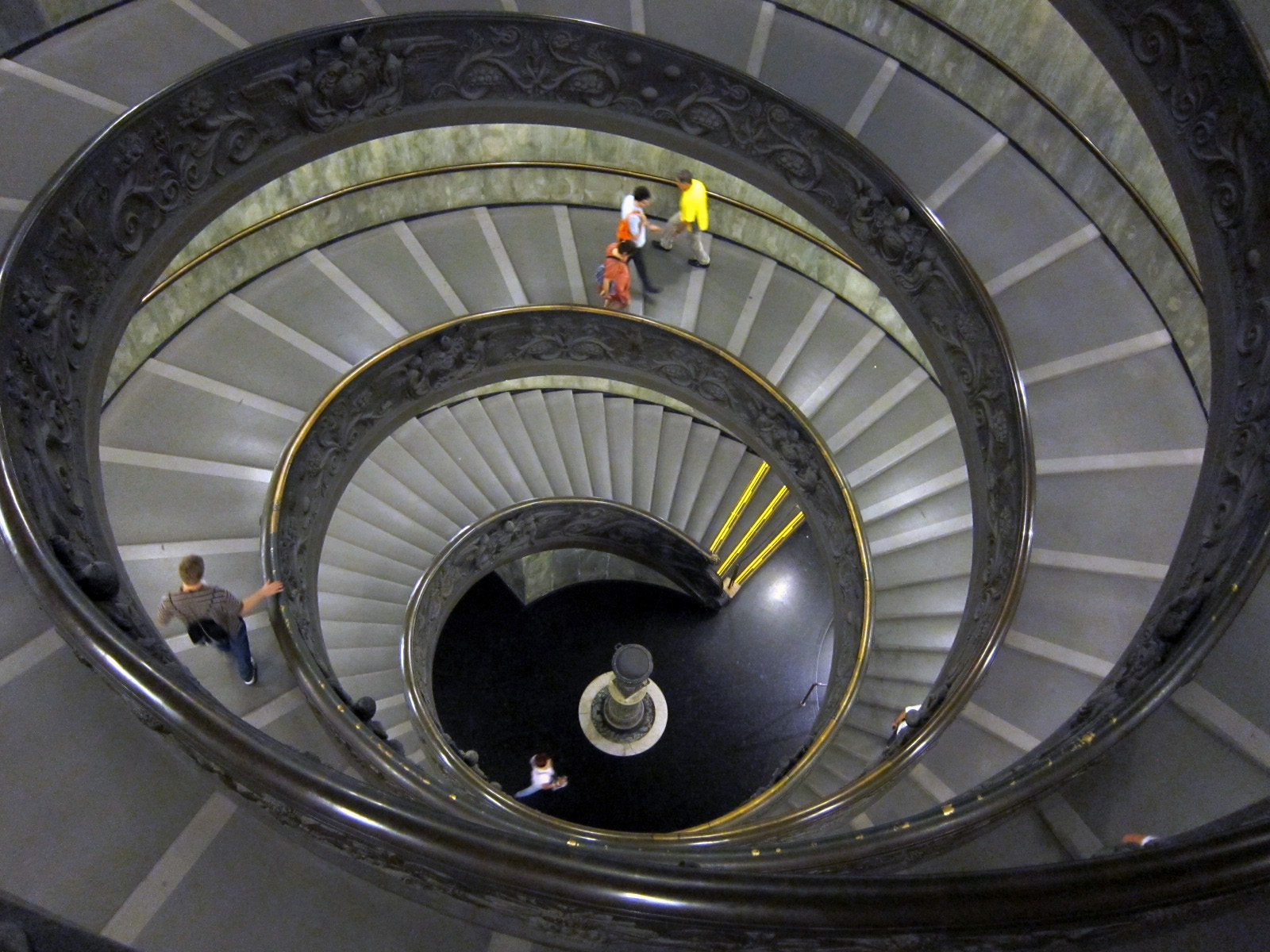 Many tourist feel they need to visit the Vatican Museums. It’s on the top three things to do in Rome. If they go to Paris, they feel that have to go to the Louvre. It’s all kind of strange since I’ll bet they never go to the museums close to them back in America. If you come to Europe with kids, there are plenty of things to do that everyone will like, especially in Rome, where the entire city is an outdoor museum.
Many tourist feel they need to visit the Vatican Museums. It’s on the top three things to do in Rome. If they go to Paris, they feel that have to go to the Louvre. It’s all kind of strange since I’ll bet they never go to the museums close to them back in America. If you come to Europe with kids, there are plenty of things to do that everyone will like, especially in Rome, where the entire city is an outdoor museum.
By the time we got to the Raphael Stanze the din included 40-50 people and 4 guided tours (in 4 different languages) all going on at the same time. The rooms aren’t very big but the ceilings are tall and the plaster is a perfect material to bounce noise from. In trying to stay one room ahead of the guided tours or the noisy children we lasted a little less than 3 hrs. We walked back to the grand spiral staircase, down and out.
The Night Tour at the Vatican is a great ticket and we’ll definitely do it again. If you get on this tour, plan ahead. Know what you want to see and get there first before the crowds ruin the experience.
Rome is one of the best walking cities in the world, even in the intense heat. There is a treat around every corner. We walked the cobblestone streets till out feet gave out. They look beautiful but they are killer on both feet and tires. Now I know why there are so many shoe stores in Italy. Today, we had a great walk down the river passed the little island of Tiburtina through the Temple of Hercules, past the church of Santa Maria in Cosmedin, up to the Circus Maximus and stopped at the Il Farmer’s Market della Capitale on Via San Teodoro, a very elite group of small farms and producers of cheeses, meats, vegetables, pies, cakes, fruit, bread, honey, jams, wine and beer. Everything is VERY affordable and incredibly delicious. We bought a couple of bags worth, came back to the apartment and enjoyed a fabulous lunch.
On Sunday, we took the Freccerossa train from Rome to Florence (1hr 33minutes) to spend the afternoon with our friends Paola and Fabrizio Cinelli. We’ve known these people for over 10 years. They’re like family. We all had a giant lunch at our favorite restaurant in Lastra A Signa, Edy Piu. I can’t figure out how the Italians can eat so much food and still stay so trim. I can’t keep up with them. After our lunch of fried fiore di zucca, crostine di fegato, panzanella salad, taglietele con funghi, vedurre frito misto e filetto da manzo, I was ready for a long nap.
Onward through the old Jewish ghetto, over to the river and past the Tiburtina island. Turn in by Santa Maria in Cosmedin and walk the length of the Circus Maximus, then on further to the Baths of Caracalla and even further into the Parco degli Scipioni. We’re now off the tourist maps. They’ll only take you as far as the Baths of Caracalla. Parco degli Scipioni takes us along the volcanic basalt stones of the Via Appia (Appian Way), the first of the great Roman roads named for Appius Claudius in 312 BC. He was the censor at the time, responsible for the census, the public morality and overseeing new building projects sponsored by the Senate. During his term, the first aqueduct of Rome (Aqua Appia) was also built and consequently named after him. At that time naming public works after the censor was probably not much of an honor but today we know more of the Appian Way than any of the members of the Senate in 312BC.
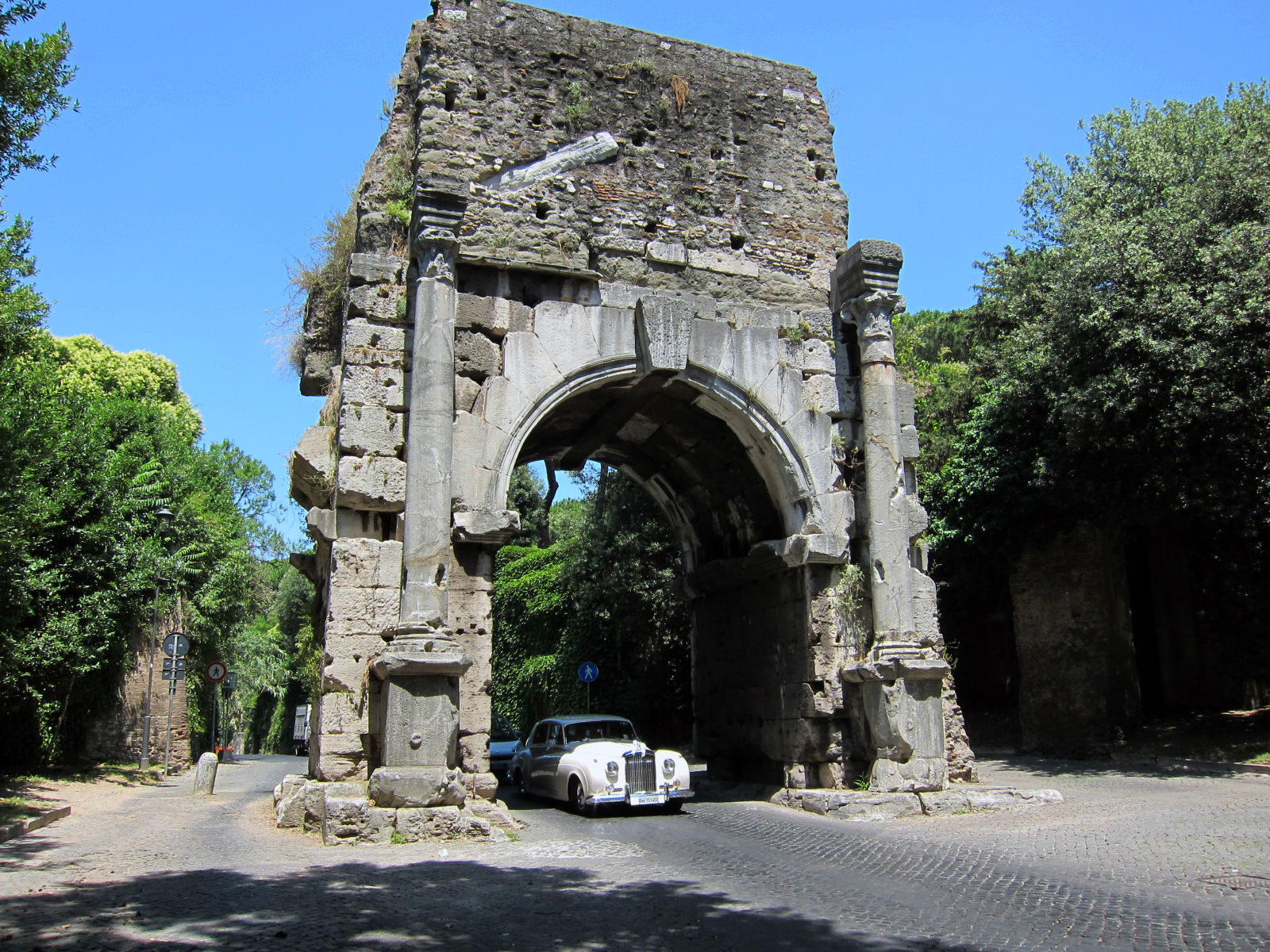 Once we entered the Parco degli Scipioni, it was another 40 minutes in the blistering heat, pounding our feet on the uneven stones till we finally came to the Arch of Drusus, named for the Roman Prince, Drusus. He was the son of Augustus and Livia. Drusus conquered Germania in 12BC at age 26 and died a few years later in 9BC. The Arch of Drusus wasn’t a triumphal arch. In fact, it wasn’t even built till about 200 years after his death. It was built as part of the aqueduct, Aqua Antoniana, which supplied water to the Baths of Caracalla across the Appian Way.
Once we entered the Parco degli Scipioni, it was another 40 minutes in the blistering heat, pounding our feet on the uneven stones till we finally came to the Arch of Drusus, named for the Roman Prince, Drusus. He was the son of Augustus and Livia. Drusus conquered Germania in 12BC at age 26 and died a few years later in 9BC. The Arch of Drusus wasn’t a triumphal arch. In fact, it wasn’t even built till about 200 years after his death. It was built as part of the aqueduct, Aqua Antoniana, which supplied water to the Baths of Caracalla across the Appian Way.
Porta San Sebastiano sits directly behind the Arch of Drusus. This gate was designed by Antonio da Sangallo the younger in the 16th century, the same artist who designed Palazzo Farnese. It’s the largest of the old entrance gates and highest towers of the old Aurelian Wall. There is a small museum inside the gate. It’s also closed on Mondays. We have to start checking the hour of operations of these places. Too bad, the museum has an entrance up inside the old ramparts of the Aurelian Wall. A couple of shirks and shrugs later; we walked back towards the Colosseo. Our reward was a granita from Ciuri Ciuri in the Monti, the best Sicilian granite this side of Reggio di Calabria.
It was an early morning start for our organized tour of the Hypergeum, the underground theatrical staging area of the Colosseum (Amfiteatro Falavium). These tours have been available for a few months and they’re well worth it. As theatrical staging people, it was thrilling to see how they operated the winches and trap doors. Many of the winch holders are still intact.
The lower floor wasn’t a part of the original construction from the 81 AD opening. It was added later by Domitian, and added onto after that and again after that. In fact the building was a work in progress up till the 4th century.
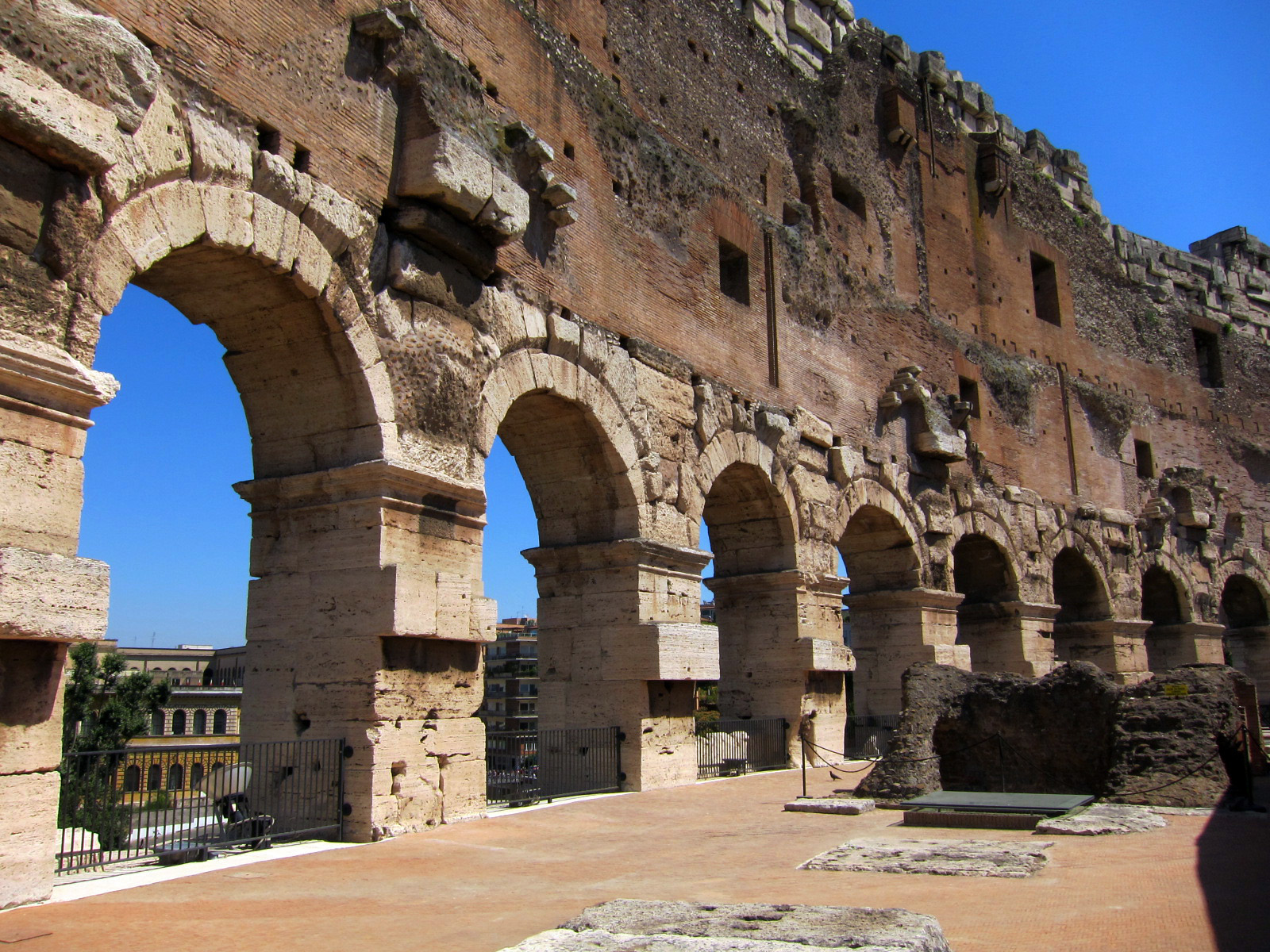 The other part of the tour was taking us up to the top of the amphitheater where we could get a good look at the positions built to hold the masts that incorporated the shade awning called the “velarium”. Although there are many concepts on how they did it, our guide (an archeologist with the Colosseo) agrees with this version:
The other part of the tour was taking us up to the top of the amphitheater where we could get a good look at the positions built to hold the masts that incorporated the shade awning called the “velarium”. Although there are many concepts on how they did it, our guide (an archeologist with the Colosseo) agrees with this version:
In Jan 2011, Diego Della Valle, the founder of Tod’s Shoes announced he would donate 25 million euros to restore the Colosseum. The ancient arena has been blackened by pollution and rocked by vibrations for centuries. Late in 2010, a few pieces of the old structure fell and although there were tourists inside, no one was hurt. Delle Valle was hoping that after he made the 25 million offer, other large Italian companies would follow and help rebuild this symbol of ancient Italy. As of now, no one else has stepped up. I have no idea how far 25 million will go. The Colosseo is really big. But it’s a start. We could already see the scaffolding on some of the outer portals. The work is supposed to begin in March 2013.
One of the added treat to the Colosseum tour was the exhibit “Nerone” , a retrospect of the most infamous emperor in the history of the Empire was spread around the ruins. The exhibit is spread from the Colosseum to the Forum.
In the Colosseum we saw rendering of what Nero’s Domus Aurea (Golden House), built after the great fire of Rome in 64AD. The Domus Aurea was completed around 68AD and encompassed three of the ancient hills of Rome. It was the larges Palace complex ever known to man, complete with a lake (which was drained for the Colosseum) pools, temples, rotating dining rooms and the 100’ tall bronze statue (Colossus Neronis) of Nero as the sun god that gave the Colosseo it’s nickname in the middle ages.
When Nero was killed, less than a year after the completion of the Domus Aurea, it was torn down as an embarrassment by the people of Rome and recreated into gifts to the people in the form of the Trajan Baths, the Flavian amphitheatre and the Temple of Venus and Rome.
The exhibit of Nerone in the Colosseo included some digital imaginations of the interiors (originally designed by the artist, Fabulus), some artifacts from the great fire of 64AD (which Nero may or may not have been responsible) and some statues and possessions of his mother, Agrippina the Younger (who he had killed), and his wife, Poppaea Sabina, who he also killed by kicking her in the abdomen while she was pregnant with his second child.
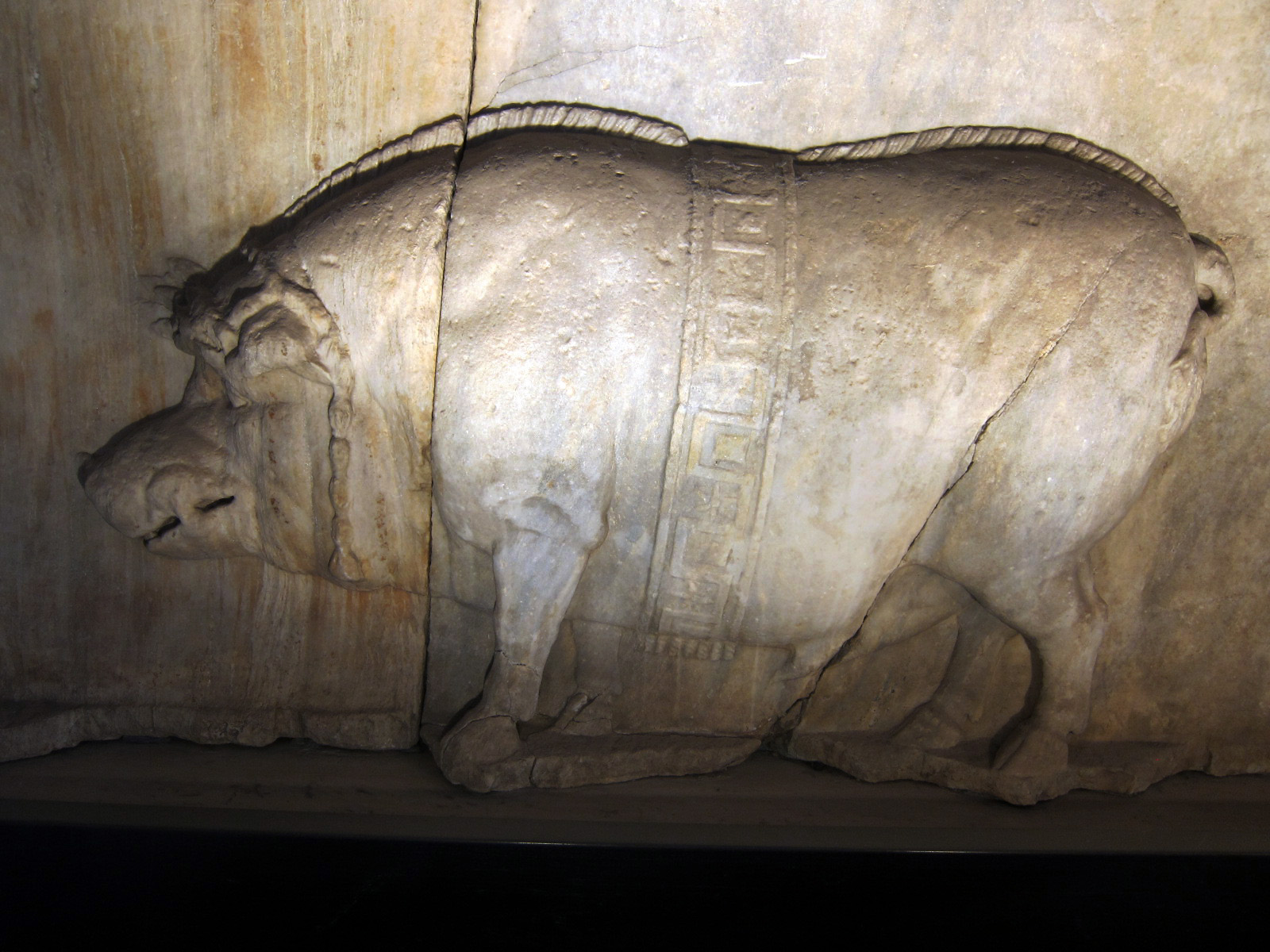 Over in the Forum, there was another exhibit to Nero in the recently opened Temple of Romulus, which was not dedicated to the Romulus the founder of Rome, but instead to the son of Maxentius who died at age 4 in 309AD.
Over in the Forum, there was another exhibit to Nero in the recently opened Temple of Romulus, which was not dedicated to the Romulus the founder of Rome, but instead to the son of Maxentius who died at age 4 in 309AD.
This exhibit had some sculpture of Nero dressed up in women’s clothing as if he was performing a play but the best part was a short film entitled “Nero Superstar” where several film clips from old films highlighted his short infamous life. There were clips from Quo Vadis with Peter Ustinov as Nero, Mel Brooks “History of the World” with Dom DeLuise as Nero, Klaus Maria Brandauer as Nero in a 1985 TV version of Quo Vadis and a few other pre 1920 depictions. It was a lot of fun and a great “kitchy” tribute to Rome most infamous Emperor.
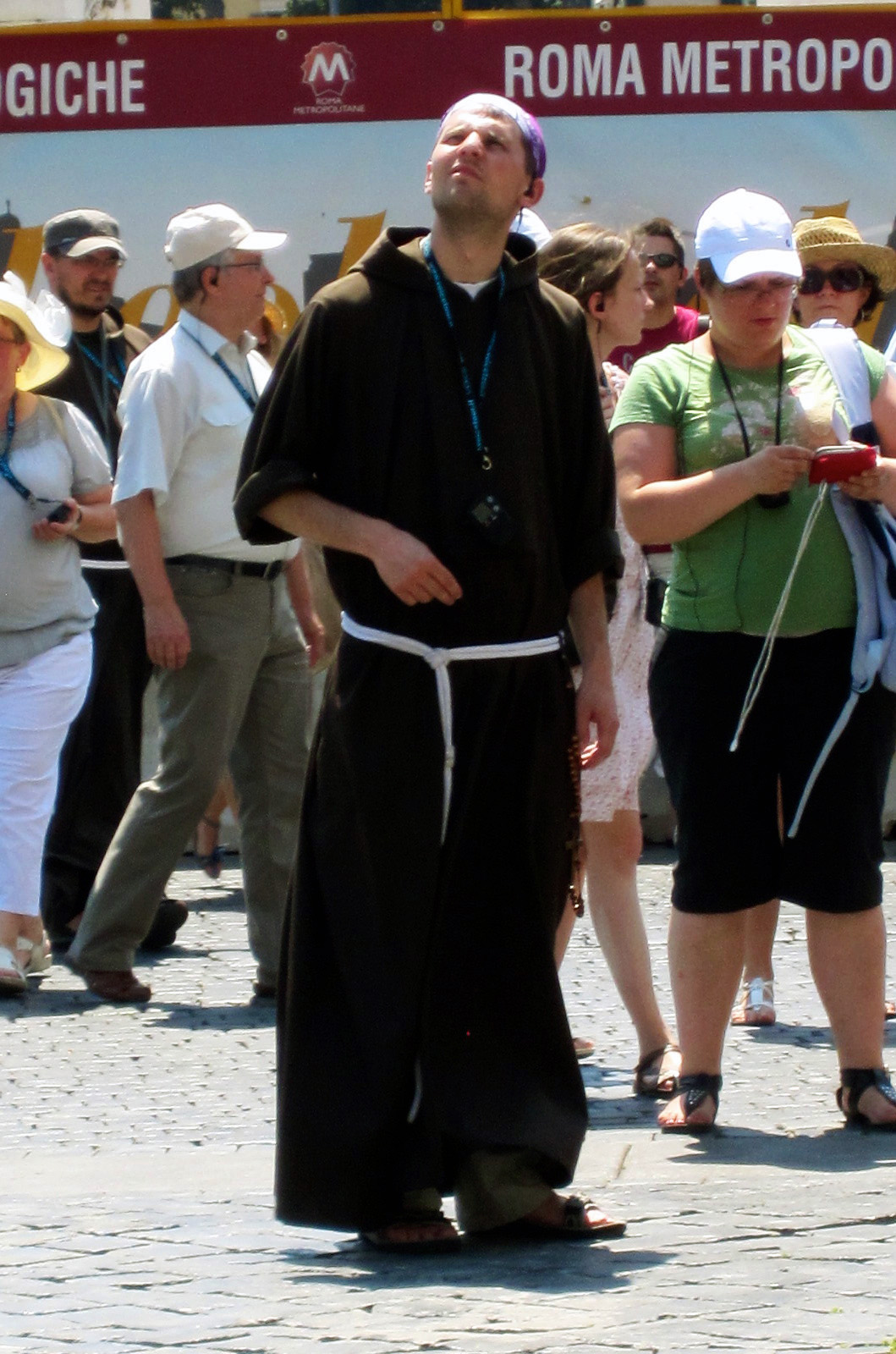 July 29; The Feast of Saints Peter and Paul
July 29; The Feast of Saints Peter and Paul
It was the Festival of Saints Peter and Paul and the streets of Rome were empty except for tourists, lots of tourists. This might not be a good day to visit your favorite restaurant or designer shop but it’s one of the few days a year when all the churches of Rome are open. There are over 900 of them in the city. We went into 4-5 but we should have taken advantage of more. Some of these churches go back to the 4th century.
The feast of St Peter and Paul is a big deal in Rome. These are to two patron saints of the city. Romulus and Remus were the founders of ancient Rome. When the Christians took over the city they kept the same mythology and dedicated the saints Peter and Paul as the founders of Christian Rome. Businesses get the day off, the Romani get a head start on the annual “Ferie holiday” and get out of town and for those who remain, there is a festival along the Tiber River ending with a great fireworks display.
We did get to try some new restaurant, food and gelato recommendations:
The Pizza Bianca and in fact all the bread, tarts and biscotti at Forno Roscioli are amazing. The Salumeria Roscioli a few doors away is a great place for lunch or to buy prepared foods or wines and bring them back to your apartment or hotel.
The sandwiches at Forno di Campo dei Fiori are amazing. I’m hooked on prosciutto with fig on pizza Bianca.
Il Farmer’s Market della Capitale on Via San Teodoro near the Circus Maximus was a great find. You can eat your lunch there or take it home.
We did go over to the madness that is La Montecarlo Pizzeria. You don’t go to La Montecarlo for the atmosphere, but the people watching is great. It’s more like a bar than a restaurant. There are about 6-7 waiters all wearing black t-shirts with pigs on the front in Italian colors of red, white and green and on the back it reads “Buona sera Signor Gestore”, the owner of the pizzeria. The pizze come out fast and the tables turn every 20 minutes. Get there early and avoid the rush. There are lots of really good pizzerie in Rome. This is one of the “most trendy”.
We searched out some of the best Gelaterie in the city and we agree, it’s worth the walk. Why settle for Blue Ice when you can have something amazing and made with fresh natural ingredients.
Our favorites list:
Gelateria Corona in Largo Argentina (Largo Arenula 27) – great granite and gelato and a 5 minute walk from our apartment
Gelateria del Teatro – via San Simone – a small alley off Via dei Coronari near Piazza Navona. Very unusual flavors like cherry cheesecake, Campari, Sicilian cassata, amalfi lemon granite and so many more. Everything with fresh ingredients. We had a couple of small granite and then turned around and came back for the gelato, within 15 minutes. This is our favorite gelateria in Rome
Ciuri Ciuri – via Leonina 18, in the Monti near metro Cavour. Sicilian cassata, granite and cannoli. It was a hot day and after a really long walk, the Ciuri Ciuri lemon granita was the most refreshing thing I can ever remember. It could be the best Sicilian style granite outside of Sicily.
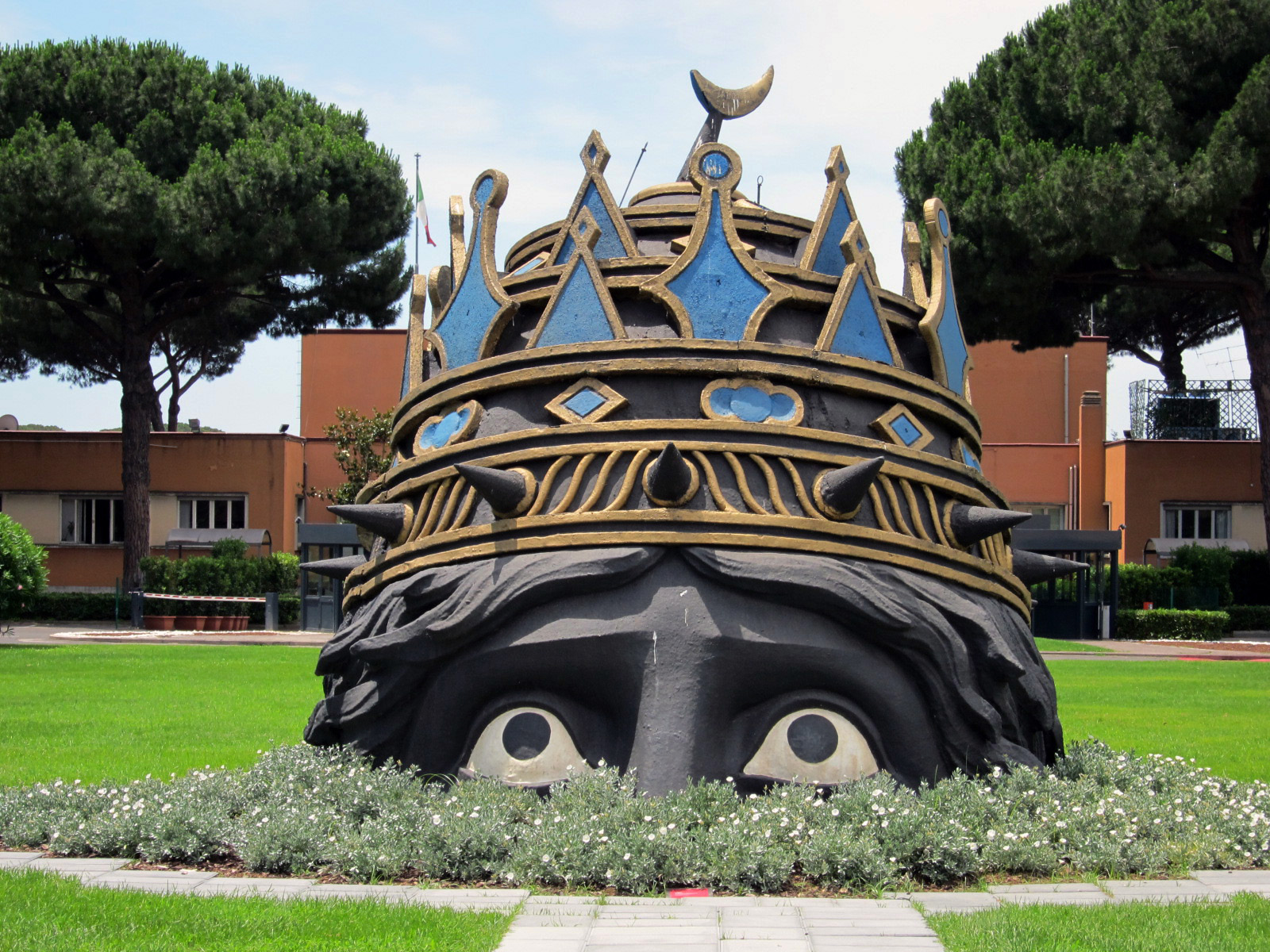
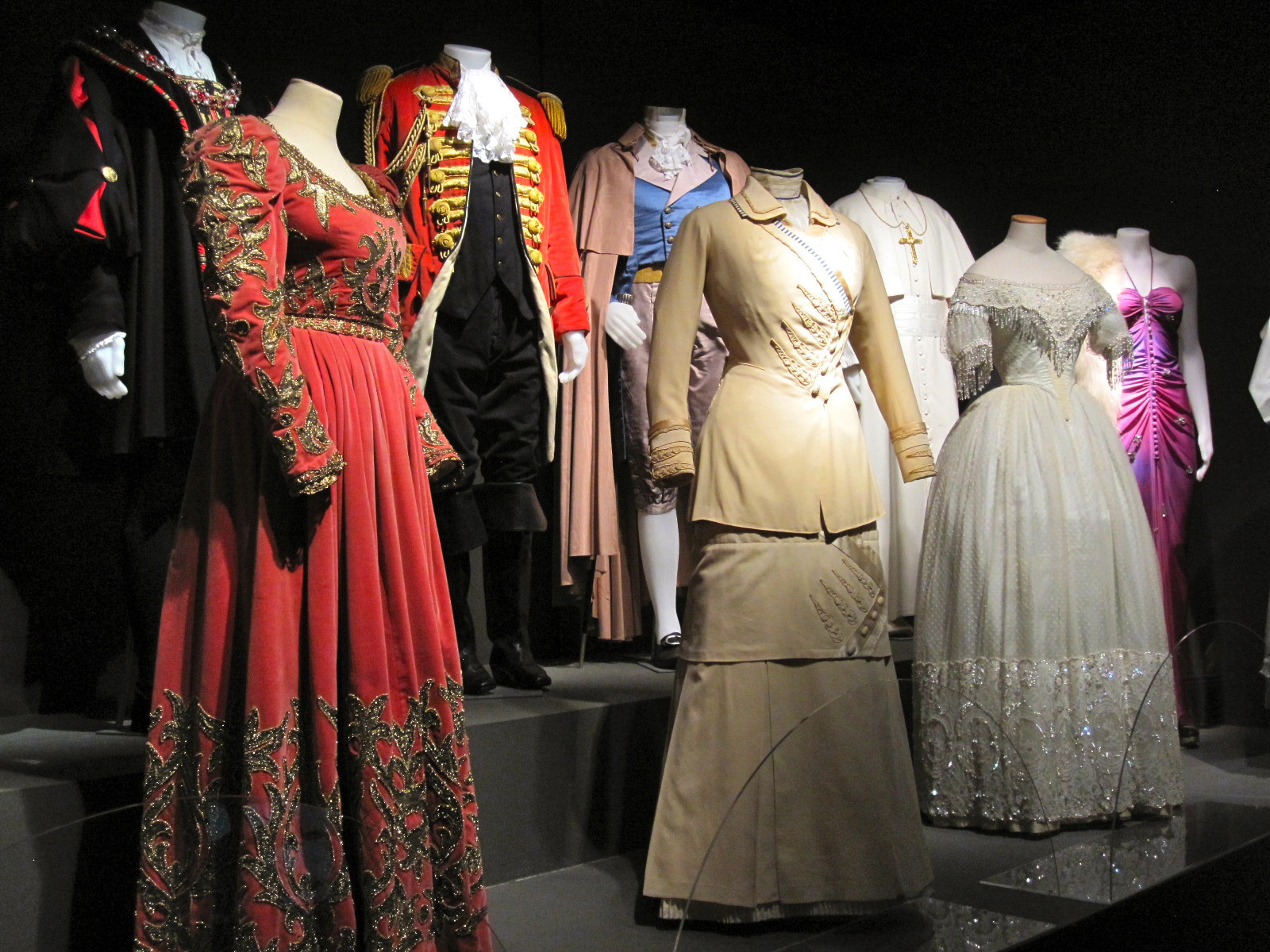
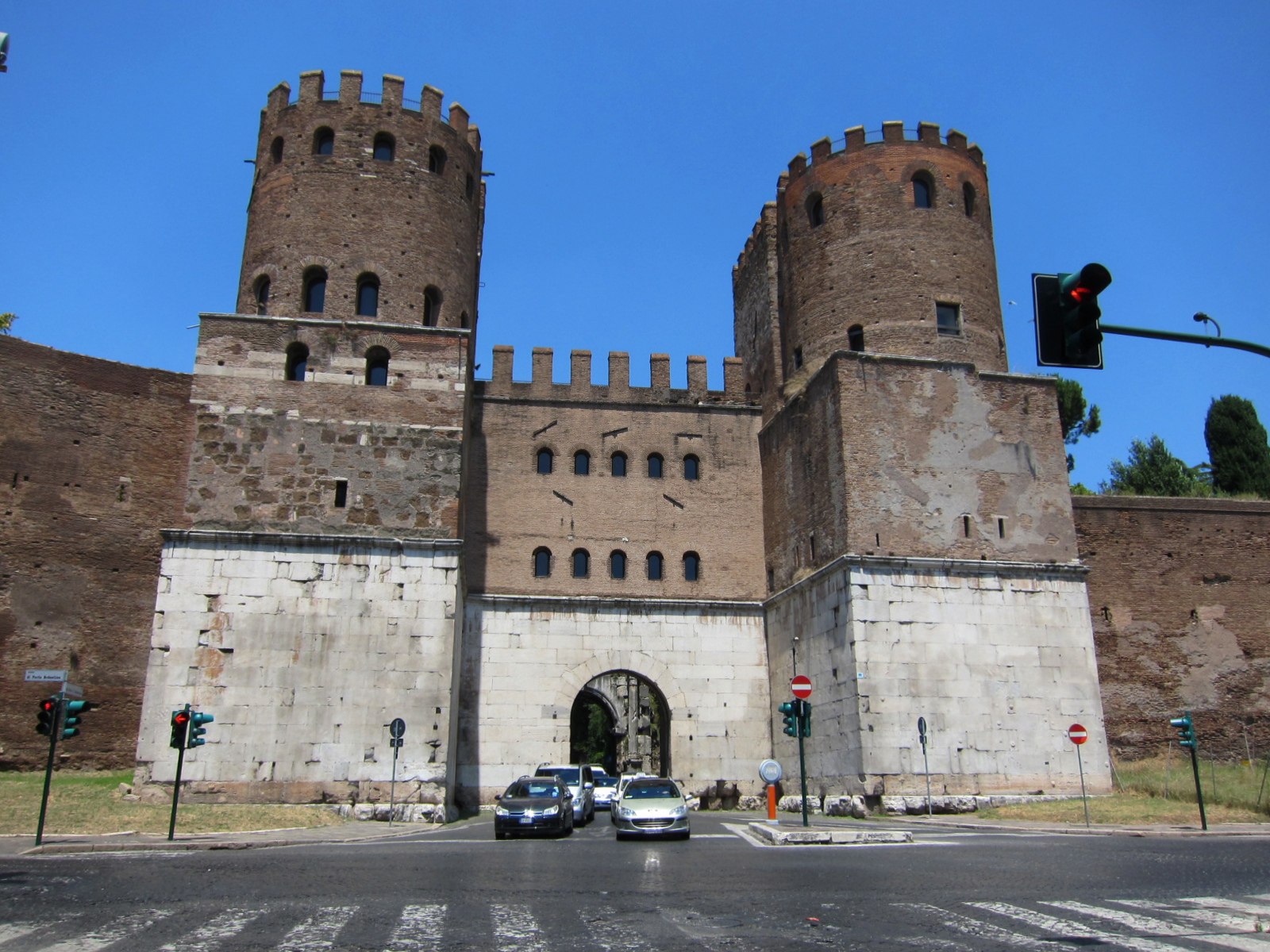

You must be logged in to post a comment.